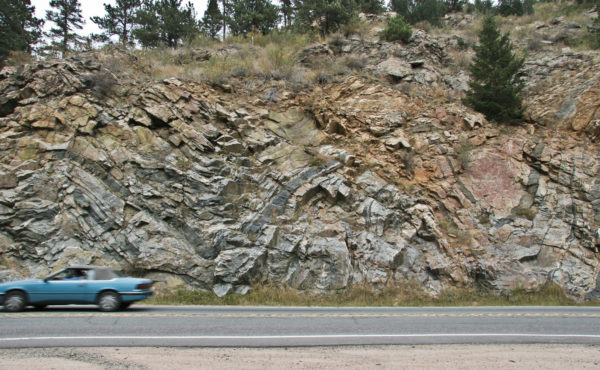89 Chapter 12 Geological Structures — Physical Geology – 2nd Edition
Chapter 12 Geological Structures
After carefully reading this chapter, completing the exercises within it, and answering the questions at the end, you should be able to:
- Describe the types of stresses that exist within the Earth’s crust.
- Explain how rocks respond to those stresses by brittle, elastic, or plastic deformation, or by fracturing.
- Summarize how rocks become folded and know the terms used to describe the features of folds.
- Describe the conditions under which rocks fracture.
- Summarize the different types of faults, including normal, reverse, thrust, and strike-slip.
- Measure the strike and dip of a geological feature.
- Plot strike and dip information on a map.

Observing and understanding geological structures helps us to determine the kinds of stresses that have existed within Earth’s crust in the past. This type of information is critical to our understanding of plate tectonics, earthquakes, the formation of mountains, metamorphism, and Earth resources. Some of the types of geological structures that are important to study include bedding planes, planes of foliation, dykes and sills, fractures, faults, and folds. Structural geologists make careful observations of the orientations of these structures and the amount and direction of offset along faults.
Media Attributions
- Figure 12.0.1: Colorado Geological Survey, Vince Matthews

